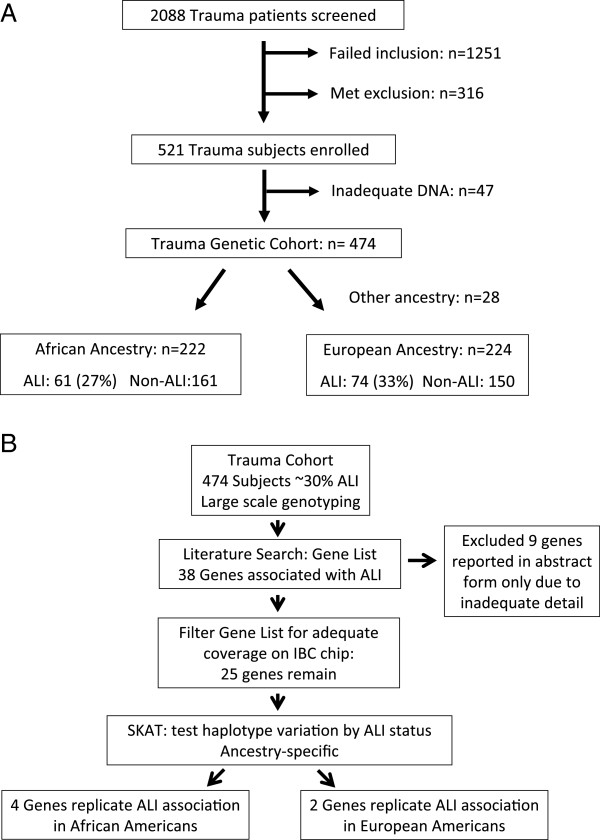Figure 1.
A: Study population. All trauma patients were screened. Eligible subjects were severely injured, with an injury severity score (ISS) ≥ 16, and were admitted to the intensive care unit (ICU). Exclusion criteria included isolated head injury and discharge or death within 24 h. Subjects with adequate DNA were genotyped with the IBC SNP array and were classified by genetic ancestry, African (AA) or European (EA), to create haplotypes for ALI candidate genes. B: Overview of study design and results. Large scale genotyping data was available for 474 subjects in a trauma cohort. A literature search using the terms “acute lung injury polymorphism,” “acute respiratory distress polymorphism,” or “genetic association lung injury,” limited to human species, was performed in May 2011 and returned 38 genes. Nine genes (IL1RN, ORMDL3, THMD, DARC, DIO2, PRKAG2, ISG15, VWF, and BVES) were cited in abstract form only, and were excluded due to lack of detail about the population or genetic variant studied. Of the 29 remaining genes (Table 2), 4 were not covered by the IBC platform. The remaining 25 genes underwent haplotype imputation for each ancestry and the SNP-set kernel association test was implemented for 3 kernel functions: linear, identical by state, and quadratic. Four genes in subjects of African ancestry and 2 genes in subjects of European ancestry replicated their association with ALI in this trauma cohort.

